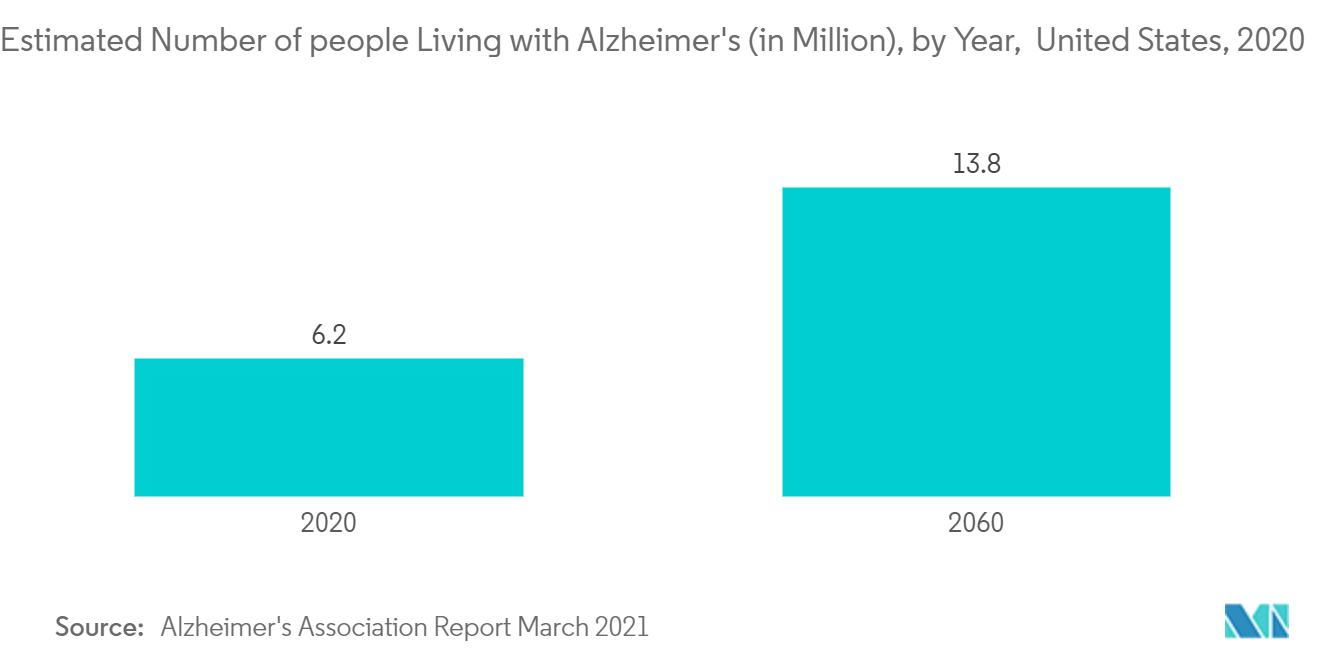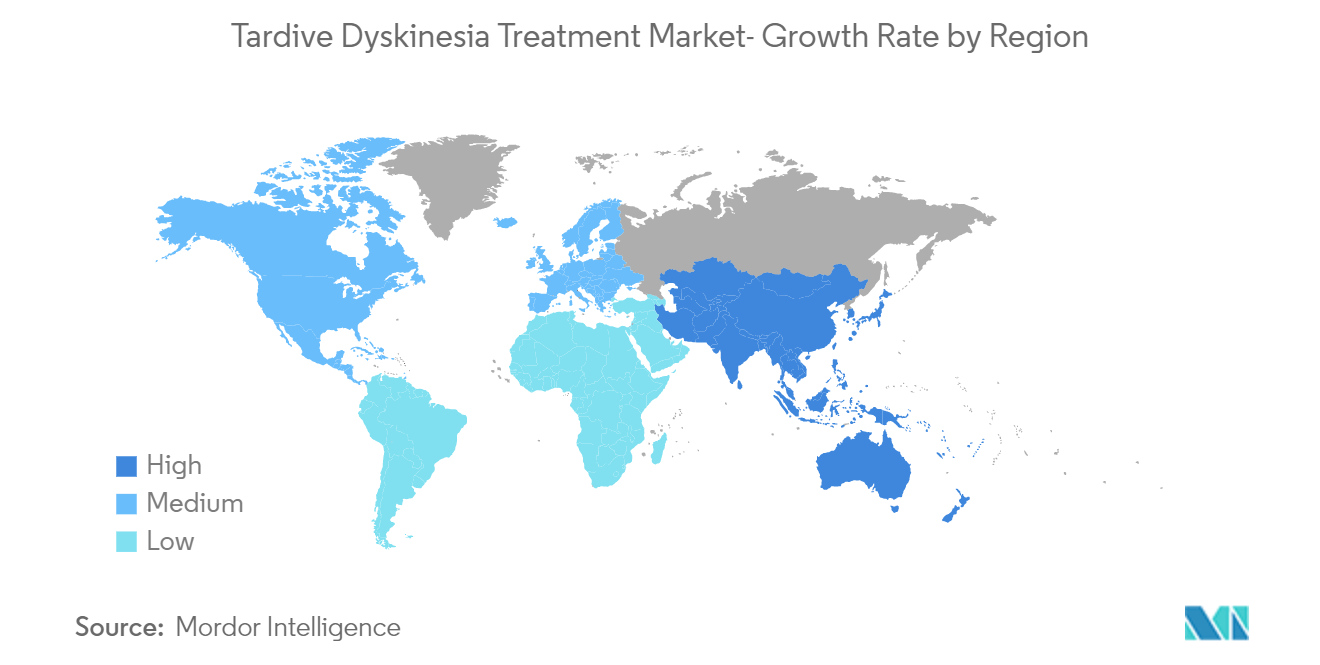Market Trends of Global Tardive Dyskinesia Treatment Industry
This section covers the major market trends shaping the Tardive Dyskinesia Treatment Market according to our research experts:
VMAT Inhibitor is Expected to Grow Faster Over the Forecast Period
The vesicular monoamine transporter type 2 (VMAT2) inhibitors are agents that cause a depletion of neuroactive peptides such as dopamine in nerve terminals and are used to treat chorea due to neurodegenerative diseases (such as Huntington chorea) or dyskinesias due to neuroleptic medications (tardive dyskinesia).
VMAT is expected to witness healthy growth in the future attributed to a growing number of neurological disorders and growing antipsychotic prescriptions. the global prevalence of Parkinson's disease is estimated to be approximately 6.1 million globally, and the prevalence increases with age, reaching 1% to 3% in the population over 65 years of age, as per the research article 'Monoamine Oxidase-B Inhibitors for the Treatment of Parkinson's Disease: Past, Present, and Future' published in February 2022. In addition, the data updated by World Health Organization (WHO) in October 2021 shows that by 2030, 1 in 6 people in the world will be aged 60 years or over. Tardive dyskinesia is associated with Parkinson's therapy, and it is expected that the prevalence of Parkinson's disease will rise over the forecast period, resulting in increased demand for the treatment option, and boosting segment growth.
Several product approvals in VMAT inhibitors are promoting the growth of the market. For instance, in May 2022, Neurocrine Biosciences presented new INGREZZA (valbenazine) data on tardive dyskinesia improvement and stability of psychiatric symptoms at the American Psychiatric Association Annual Meeting 2022. Such developments are expected to drive the tardive dyskinesia treatment market.
Several product approvals in VMAT inhibitors are promoting the growth of the market.

North America is Expected to Hold a Significant Share in the Market and Expected to do Same in the Forecast Period
North America is expected to hold a significant market share in the global tardive dyskinesia treatment market due to the increasing aging population, high prevalence of schizophrenia, increasing awareness, increasing healthcare expenditure, and the presence of well-established healthcare infrastructure. As the growing aging population will be leading to many diseases related to neurological for which this population has to take antipsychiatric drugs. Thus these populations are more prone to develop these diseases. According to the National Alliance on Mental Health in May 2021, the prevalence of schizophrenia in the United States is in the range of 0.25% to 0.64%, or 1.5 million people per year.
Additionally, the data provided in the article 'The Financial Burden from Parkinson's Exacts a High Cost' published in September 2021 shows that in the United States, an estimated 1 million people have Parkinson's disease, and more people are diagnosed with it every year, among which the prevalence is more among people of age 65 years or older. As per the source above, the prevalence of PD also has increased among people younger than 65. Additionally, the data updated by Parkinson Canada's National Roundtable Report in March 2022 shows that in Canada, more than 100,000 people have PD, and this number will grow in the coming days reaching 50 new diagnoses every day within 10 years. Thus, the high burden of the disease among the target population of countries across North America is anticipated to create demand for the development of drugs for treatment. Thereby, driving the market growth.
Moreover, targeted patient pools such as populations treated with schizophrenia and bipolar disorder in this region are also associated with this disorder, hence promoting the growth of the tardive dyskinesia treatment market in this region.


